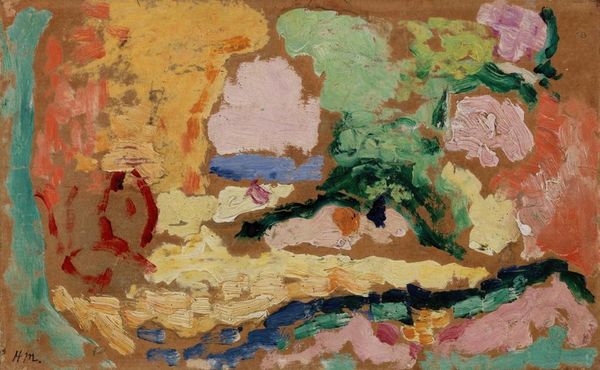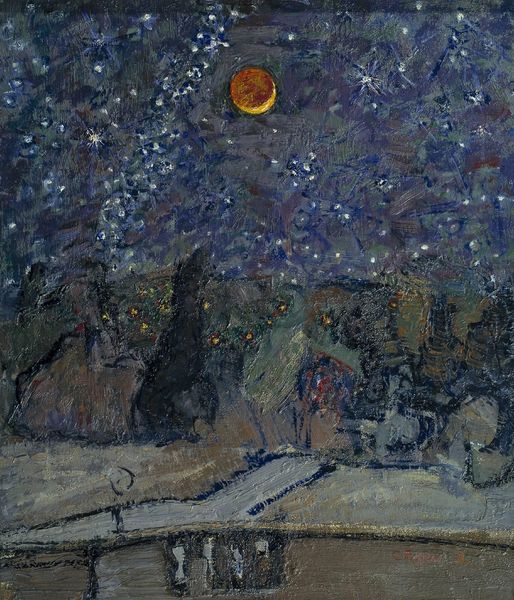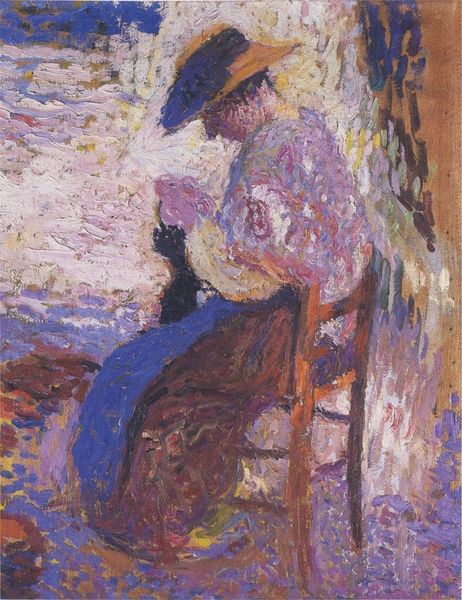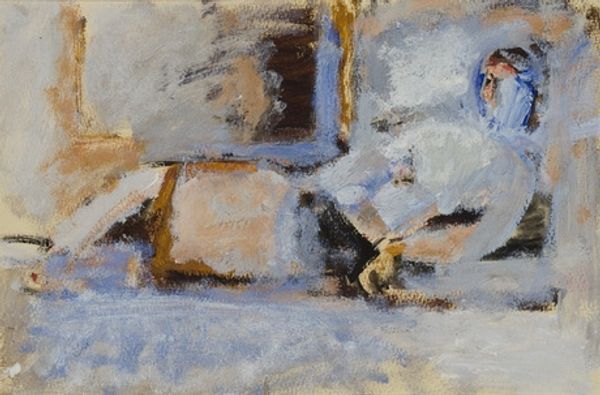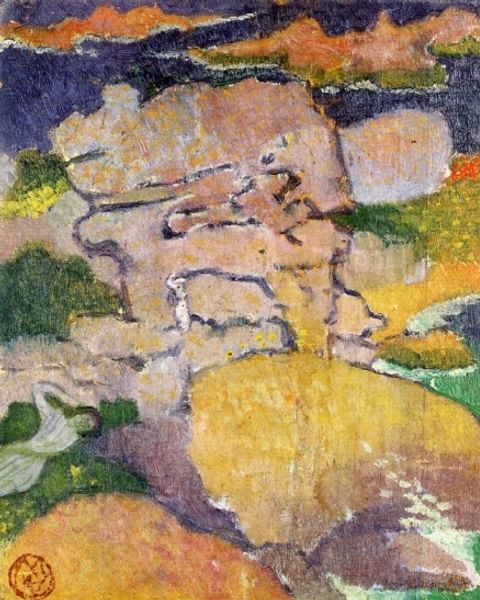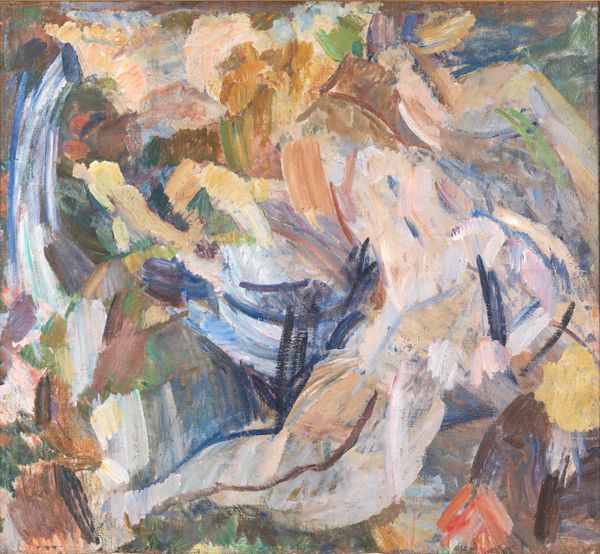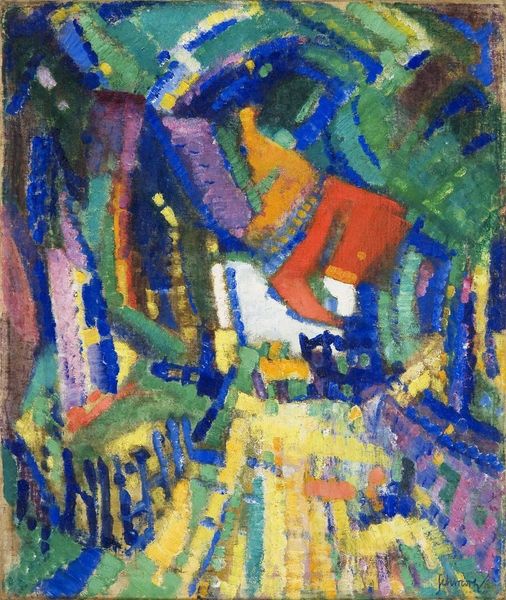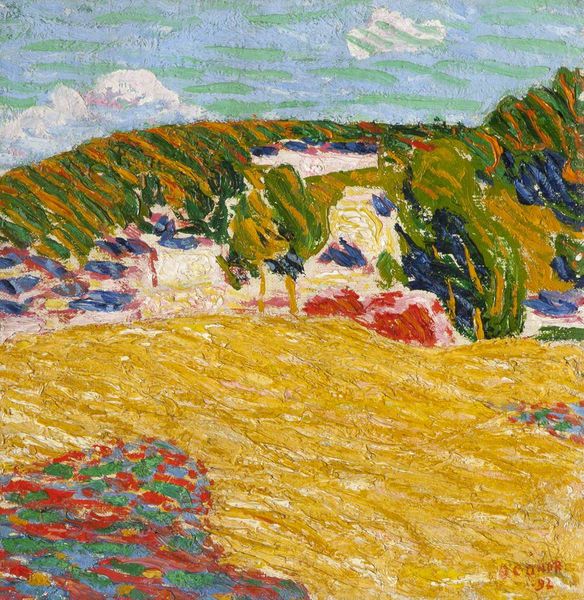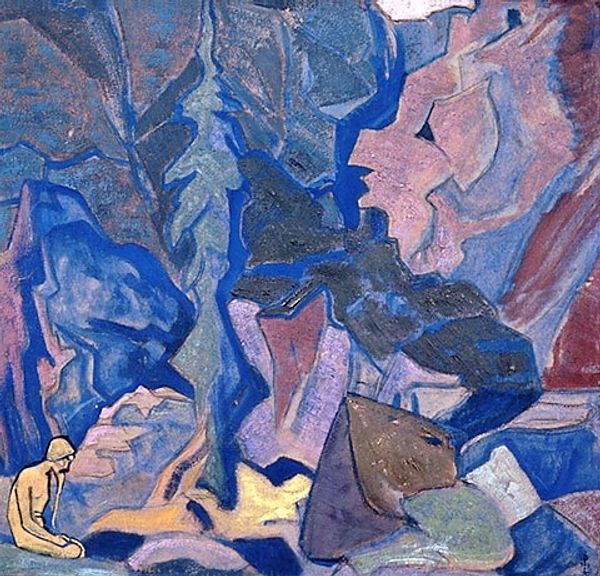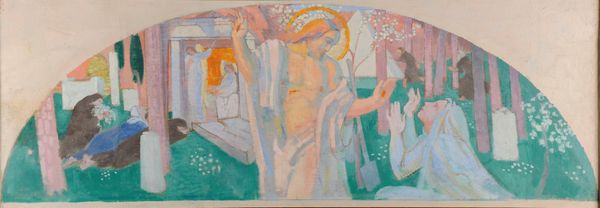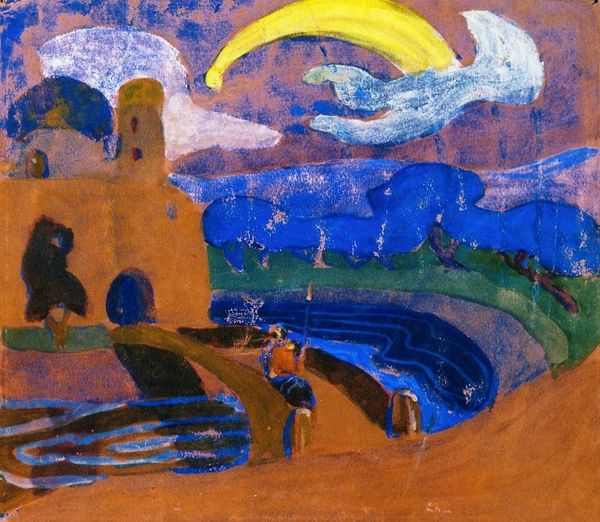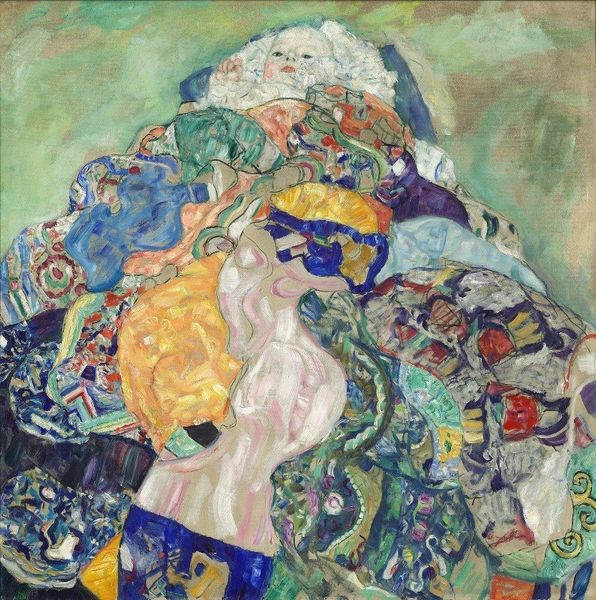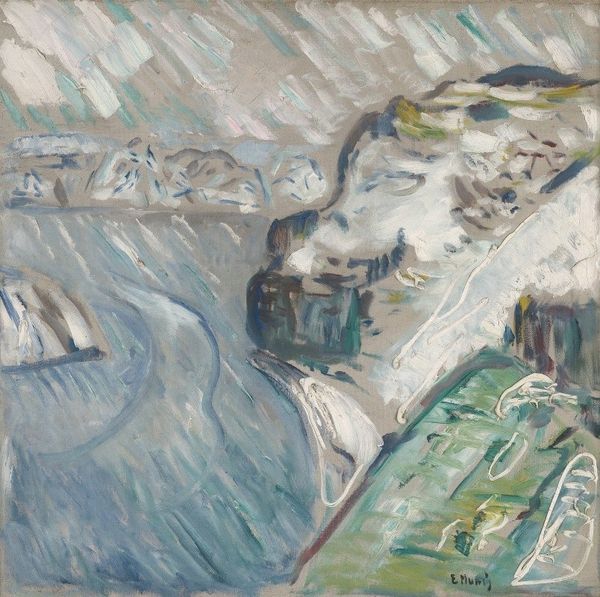
painting, oil-paint
#
portrait
#
painting
#
oil-paint
#
figuration
#
oil painting
#
intimism
#
genre-painting
#
post-impressionism
#
expressionist
Copyright: Public Domain: Artvee
Curator: Édouard Vuillard's 1893 painting, "Deux ouvrières dans l’atelier de couture," offers a glimpse into a Parisian sewing workshop. Vuillard, known for his involvement with the Nabis movement, frequently depicted intimate domestic scenes. What's your initial read? Editor: A sense of intense concentration. The textured brushstrokes coalesce, and the overall effect softens the otherwise industrial realities. There is an undeniably tender, intimate quality, achieved almost solely through Vuillard’s use of color and light. Curator: This artwork acts as more than a simple representation of working-class women. Considering that during the late 19th century women's labor was heavily exploited and poorly documented, "Deux ouvrières..." enters into the discourse of labor and gender studies. It emphasizes the critical but often ignored role women held in shaping urban economies. Editor: I find the formal dynamism fascinating, and agree that this enlivens it far beyond "genre painting." Consider the vibrant blues that punctuate the subdued palette. They draw attention to certain gestures. Are they moments of rest, or the opposite—moments of frenetic activity captured within a single image? Curator: It’s that ambiguity which makes it compelling! By bringing awareness to the mundane yet diligent aspects of labor, the work implicitly comments on social inequalities. In that era, when discussions about labor conditions were at the forefront, Vuillard humanizes these workers. The intimacy, as you suggested, evokes the politics of empathy. Editor: Perhaps Vuillard implies empathy through pictorial language: look at the painting's compositional arrangement. The figures nearly melt into the patterns of fabrics and decor, questioning conventional distinctions. His approach beautifully articulates labor's physical integration into its surroundings. Curator: The piece leaves one contemplating the narratives and lives ingrained within fabrics that surrounded Parisian life at the time. The piece is more than aesthetic representation; it is cultural analysis. Editor: Indeed, this detailed composition reveals as much through visual experience as through critical theory. It is about labor as both abstraction and as felt reality.
Comments
No comments
Be the first to comment and join the conversation on the ultimate creative platform.
